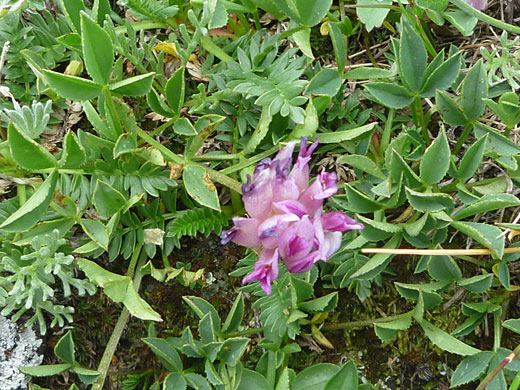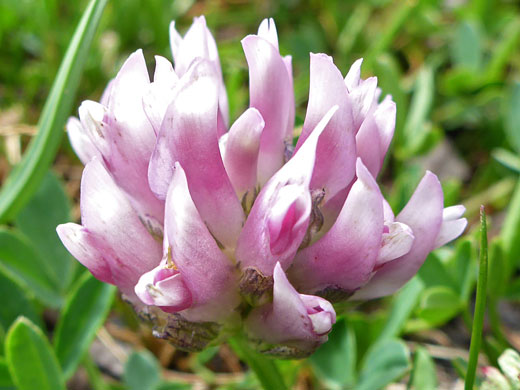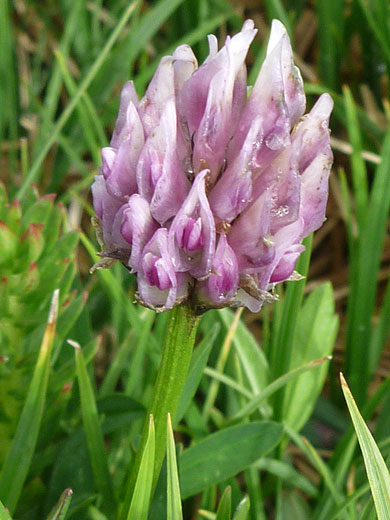
Trifolium parryi (Parry's clover), along the Timber Lake Trail in Rocky Mountain National Park, Colorado
Common name:
Parry's clover
Family:
Scientific name:
Trifolium parryi
Main flower color:
Range:
The Rocky Mountains, extending west into Utah
Height:
Up to 4 inches
Habitat:
Moist, open locations in subalpine and alpine areas
Leaves:
Divided into three short, lanceolate leaflets, often with toothed edges
Season:
June to August
Trifolium parryi is a relatively common species, found in high elevation areas in the tundra zone, hence is a small plant, producing its spherical flower clusters on leafless stems that rise just a few inches above the basal leaves. Clusters are 1 to 2 inches in diameter, typically contain 8 to 12 heads, and are subtended by a whorl of 6 to 12 lanceolate, blackish-green bracts. The banner petal is light pink in color, curving backwards, while the keel and wings are darker pink. The calyx is green or purplish, and its lobes are shorter than the fused part.
Stems can grow upwards or at an angle. Leaflets usually have a few teeth along the edges, and a tiny spike at the tip; they are rather shorter, thicker and broader than similar clover species. Leaves, stems and calyces are hairless.
Stems can grow upwards or at an angle. Leaflets usually have a few teeth along the edges, and a tiny spike at the tip; they are rather shorter, thicker and broader than similar clover species. Leaves, stems and calyces are hairless.
All Contents © Copyright The American Southwest | Comments and Questions | Contribute | Site Map









